#flashguns
Explore tagged Tumblr posts
Text

[Flashgun.]
1 note
·
View note
Photo

Street life by Francesco Centore
#elderly#people#relaxation#portrait#street#streetphoto#streetphotography#streetlife#urban#urbanlife#city#citylife#myspc#flash#flashgun#strobe#frontal#torreannunziata#naples#italy#r123757#flickr#thingsdavidlikes
1 note
·
View note
Text
threadbare - AO3
“Thanks,” she tells him quietly, meeting his eyes for a flicker of a moment.
Mulder nods in response because Scully, I think I might drown this city in jet fuel and spark a match to keep you warm does not seem appropriate. Lucky him, he’s an old pro at concealing unwelcome, flashgun thoughts.
87 notes
·
View notes
Text



People used to call me Bond in the street. It was impossible to avoid crowds of people all over the place and blinding flashguns. The Beatles had to run the gauntlet as well, but at least there were four of them!
(Sean Connery)
68 notes
·
View notes
Text

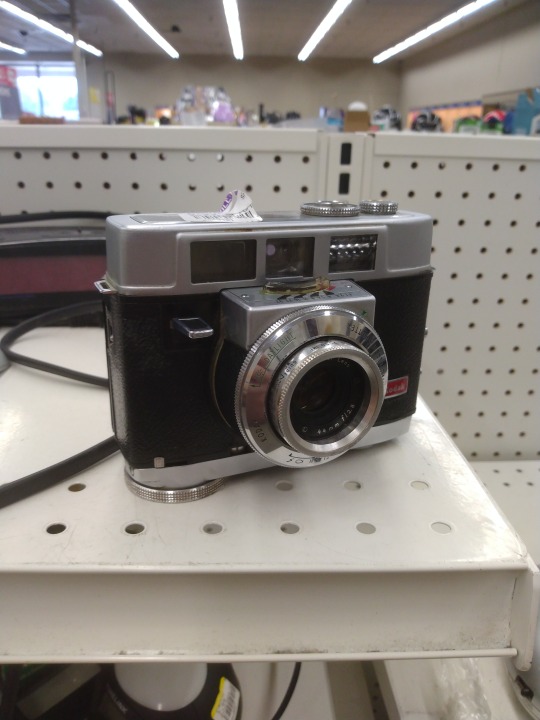
Tumblr loves cameras, sometimes so much they don't peel price stickers off of them to find out their proper names. It's a 35mm with a short lens but all the expected settings of a larger camera.
[later] Since Tumblr loves cameras, people have written in to say this is a Kodak Motormatic 35, "the last American made 35mm cameras, and their first automatic exposure 35mm cameras", and true to what I said earlier it has some accessories and features found on larger models such as a side-mount flashgun. The Motormatic 35 first hit the market in 1960.
87 notes
·
View notes
Text
An old article, but amusing regardless.
First it was James Lileks and the Gallery of Regrettable Food. What were the photo editors on these cookbooks thinking?
I'm well aware the colour quality of old pictures degrades and yellows, to their detriment, but IMO the images on that website can't have looked very appetising even when new.
There are ways to assemble variegated foodstuffs on a plate that looks attractive, and then there are these.
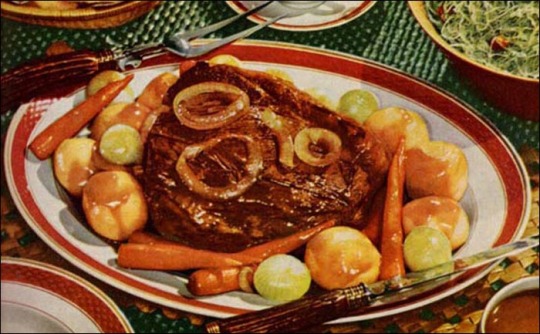
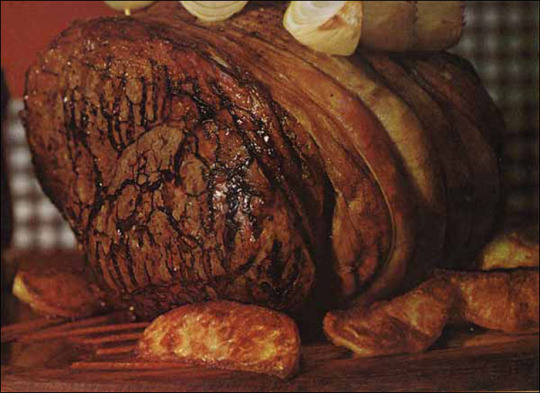

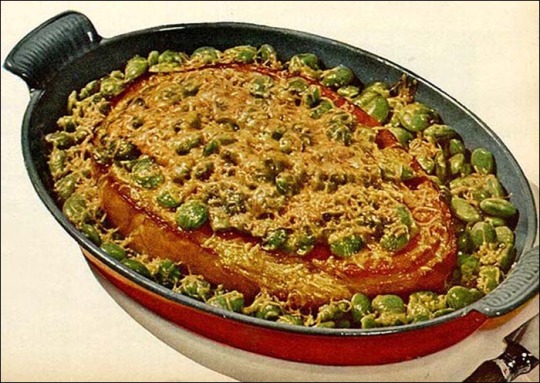
Dimly-lit meals for one and Sad desk lunches are yet more shuddersome antidotes to lovingly-photographed food porn erotica (porn would be messy close-ups of eating it).
However, despite what the article suggests, food photography doesn't need "the highest-spec kit while dangling from light-fittings for just the right angle" to look good.
*****
Using a phonecam while out with your friends in a crowded pizzeria isn't going to give the best results, but then neither is a joyless packed lunch on a rainy Monday in February, even if shot with a $33,000 camera like this Hasselblad, and full studio lighting.
@dduane's hobby site European Cuisines (down for maintenance) did just fine for years with a Sony W17, a compact digicam with a superb Zeiss lens.
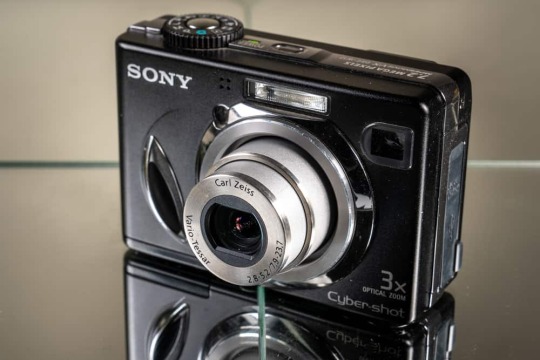
Here are Sony shots of an apple upside-down cake made with Beauty of Bath apples from our own tree (they really are pink all the way through) and a quiche Lorraine just out of the oven.
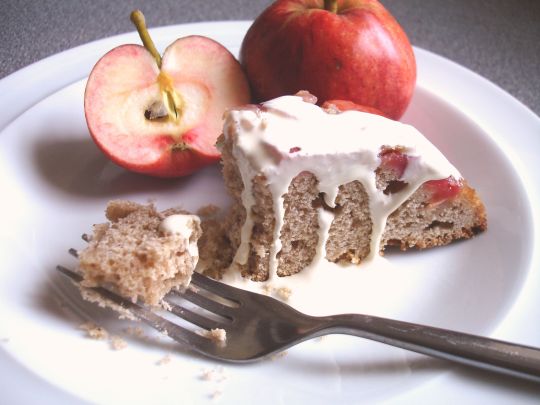
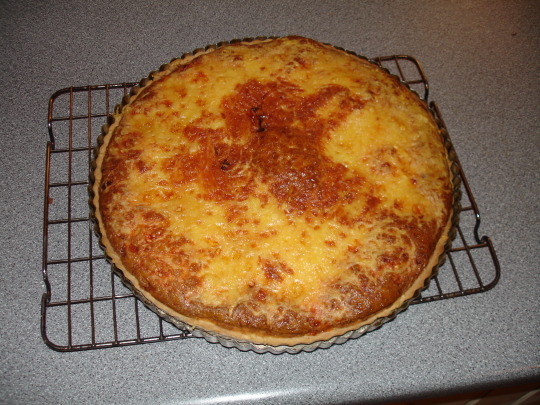
After a while I got a second-hand Nikon D40 DSLR; the money saved on second-hand let me afford an excellent lens, a top-of-the-line flashgun and that neat little flash which is so much better than the camera's built-in one.
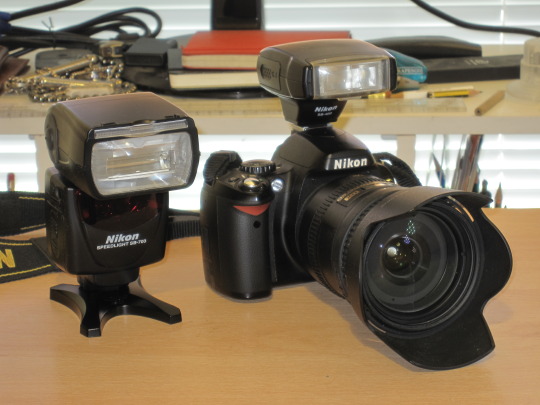
Here's the Nikon's take on last year's roast-goose-and-all-the-trimmings Christmas Dinner, as well as bacon (corned beef is the Americanised version) and cabbage for St Patrick's Day.


Now we're mostly using HTC U11+ smartphones whose cameras are not only top-notch but have excellent low-light capability.
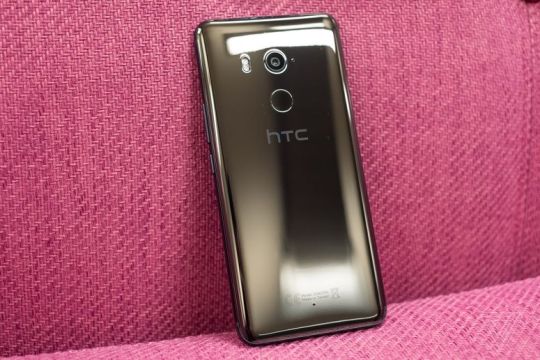
This is good, because our lighting has always been mostly natural daylight with occasional flash and reflector-screen assistance.
Here are U11+ images of soda bread done in a cast-iron casserole or Dutch oven, and Geflügelragout (a stew of roast chicken with red wine and lemon) with saffron-pumpkin noodles.


This has become Brightwood Vintner's Chicken in the Food and Cooking of the Middle Kingdoms project, and why not? It's delicious! Here's DD and U11+ in action, and the noodle close-up she was shooting in that pic.


None of the food we shoot is "styled" for photography with varnish for glossiness, paint for cream, machine oil for honey, microwaved cotton-wool for steam and lots of other cunning but inedible trickery.
Our stuff is all for eating - so much so that getting "photograph the food" and "eat the food" in the proper order can sometimes be a struggle.
Like these crumpets, for instance.

You would, wouldn't you?
I nearly did, giving DD conniptions because she hadn't photographed them yet, and the Kerrygold butter was melting Just Right...
In a choice between shooting Have To Eat images and Want To Eat ones, we'll stay on the Want To side of the fence, and if people looking at those pix also Want To take a bite out of their screens, we're getting the job done.
And we're not hanging from the light-fittings to do it... :->
#food and drink#food photography#food and cooking of the middle kingdoms#gallery of regrettable food#james lileks
78 notes
·
View notes
Text



Small direct flashes are the bane of a retoucher's existence. Some photographers will get attachable brackets so the flashes are higher up and don't give red eye. But it is still a tiny light source and tiny light sources are not flattering. (Remember all of my ring light rants?) They remove all dimension from the photo. They make colors flat and sterile. And they make it very difficult to achieve natural tones.
This is why I bounce my flash off the ceiling. Then the ceiling becomes the light source and the ceiling is big as heck.
Unfortunately back the days of film, sometimes a small flashgun was your only option. A dark church is one of the most difficult environments to get good photos in. Nowadays you can crank up the ISO and use a denoising plugin in editing. But back then, even if you got the fastest lens and the most sensitive film, it still wouldn't be enough to get a proper exposure. And since big studio strobes had power packs the size of a mini fridge and were not portable enough for a wedding gig, your only alternative was a tiny direct flash.
So I am not blaming the photographer for making this 40 year old photo difficult to edit. But I do wish that church had chosen more attractive carpeting and wood banisters. Film is not great at rendering large patches of red and that wood seems to only look puke color no matter what I do to it.
And so this turns into a philosophical question. Is it more important to preserve this memory exactly as it happened? Or is it okay to improve the aesthetics with marble stairs so you aren't distracted by the ugly wood and carpeting and can just enjoy the fond memory?
So far everyone I've asked is leaning toward keeping it original for a print and just showing them the marble one.
56 notes
·
View notes
Text

Feargal Sharkey of The Undertones, Holloway Road launderette, London, UK, August 11, 1979. Photo by David Corio
"I’d met Feargal as he left a rehearsal room on Holloway Road in north London late one evening. I shot some portraits of him under a street light as I didn’t have any lights or flashgun with me. It occurred to me as we passed a launderette that this was the best lit location in sight and that’s how this photo happened. It was a quiet session as Feargal didn’t speak much and I tend to go with the subject’s mood.
The Undertones were a great pop punk band from Derry in Northern Ireland and Feargal’s distinctive quavering voice made them stand out. The band’s first album ‘The Undertones’ featuring the classic song ‘Teenage Kicks’ John Peel’s favourite song of all time had been released not long before I took this picture." David Corio
5 notes
·
View notes
Text

Jim Backus takes his job seriously. Here he is as Flashgun Casey on the CBS Radio program, "Casey, Crime Photographer” in July 1943.
13 notes
·
View notes
Text
Gammon and Monogon’s Console Boxes
Both consoles of which belong to or was mentioned by Duck Season and Boneworks created by Stress Level Zero

Gammon Kingbit Game System (KBGS) VS. Monogon Polysystem. (PS)

Kingbit Game System (Deluxe Pack)
Deluxe-Package Excitement
The Deluxe Pack is a video system designed for the whole family in mind. Only Gammon offers innovative accessories and a vast library of games paks that are both simple and sophisticated enough to challenge the abilities of everyone in the family.
The Deluxe Pack game system includes the Kingbit Console, a game controller, Kingbit Flashgun, and a FREE copy of Duck Season. Get ready to tap your mind into a world of virtual entertainment!
Just pop in any game from our ever-expanding library of Kingbit games and experience come-to-life virtual video that will have you in the edge of your seat. With challenging action, incredible graphics, vibrant colors and sound, Gammon brings the boardest range of hot video game titles available.
To top it off, the Deluxe Pack is built for expandability. Not only can it accommodate the KBGS Advantage. “KBGS Max,” or the KBGS Satellite or KBGS five score for five-player fun! Our Official Gammon seal of exclusive assures you that these products have met our standards of excellence.
The Deluxe Pack in-home game-system. Now the entire family can tap in on the world of excitement.

Monogon Polysystem
[Polysystem mockup console by Game Theory]
Only Monogon……Has it All!
Monogon started the 32-bit game revolution. And we’re still leading the way. Only Monogon gives you more of everything…
More Games
Only Monogon gives you hundreds of 32-bit hits. From realistic sportsplay to high-action adventures - from classic arcade hits to major movie titles and much, much more. Plus, with our special converter, you can still play all your 8-bit Master Game favorites on the Polysystem.
More Options
Only Monogon gives you more ways to play - with lots of controller options and the most sophisticated laser shooter ever designed. And only Monogon lets you team your 32-bit system with CD technology- to tap into the cutting edge in video games.
More Entertainment
It’s been building since we first introduced the Polysystem. And it’s better than ever! Ultimate challenging gameplay. Incredible arcade quality and digitalized graphics. Spectacular digital sound with realistic voices. Plus the stereo music by Monodisc that’ll knock your socks off. (And you can hook them up!!!) All only from Monogon.
Join the 32-bit Revolution
[Both the Kingbit and Polysystem, along with Gammon and Monogon are both a parallel the rivalry competition between Nintendo and Sega with Their NES and Sega Geniuses in the 80s, at least that what we see in comparison.]
[Both consoles belong to Duck Season and Boneworks which the games were made by Stress Level Zero.]
#duck season#boneworks#gammon#kingbit game system#kbgs#monogon#polysystem#gammon vs. monogon#parallels#parody#stress level zero
2 notes
·
View notes
Text
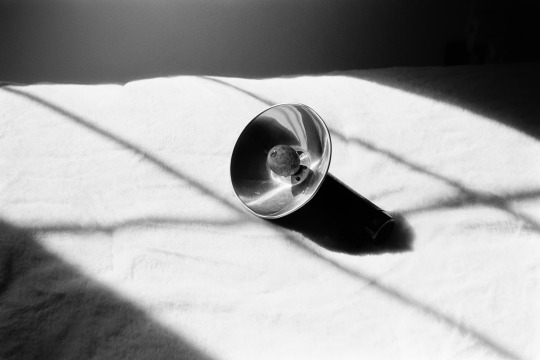
oh and! i fixed my Argus C3 Matchmatic (1959) rangefinder, so now I can do flashbulbs and stuff. I love this strange machine and it feels nothing at all, anyway here's a spent flashbulb in the dinged-in-air-transit original flashgun
Argus C3 Matchmatic, Coated Cintar 50mm f/3.5, Fomapan 100
#photographers on tumblr#35mm#lensblr#photography#original art#black and white#original photographers#bnw#black and white photography#black & white#black & white photography#argus#35mm black and white#foma
9 notes
·
View notes
Text
"Footage of Meghan [the Duchess of Sussex] and Prince Harry being cheered by crowds in England has gone viral after Prince William's trip to Scotland caught the attention of anti-monarchy campaigners.
"The Duke and Duchess of Sussex drew scores of fans during a walkabout in Brighton in October 2018, several months after their wedding that May.
"It was their only joint visit to Sussex, the southern English county from which their titles are drawn, and they met cheering supporters near the Brighton Pavilion, which was once a royal residence.
"Fans of the couple shared the footage on the same day Prince William visited Aberdeen in Scotland with little fanfare, sparking mockery by anti-monarchy Twitter accounts.
"Footage showing the Sussexes being hit by a volley of flashguns as crowds cheered went viral on TikTok after it was liked almost 10,000 times and viewed 155,000 times.
"It was posted with the message: 'They will tell you fake stories that the Uk public hates #princeharry & #princessmeghan but only Harry and Meghan can pull these crowds and standing ovations. This is just one reason out of many why the #royalfamily had to get rid of them and try to make them the villain.
"'The Royal Family refused to do their job but they're also jealous of the ones who do it better than them.'...The TikTok post came on the same day the Prince of Wales visited Aberdeen and appeared to draw few supporters, walking through empty streets with no royal watchers visible around him."
3 notes
·
View notes
Text


teklight + tekbarrel
flashgun + shells
5 notes
·
View notes
Text
Here's another of those transparent cameras alongside the standard version.
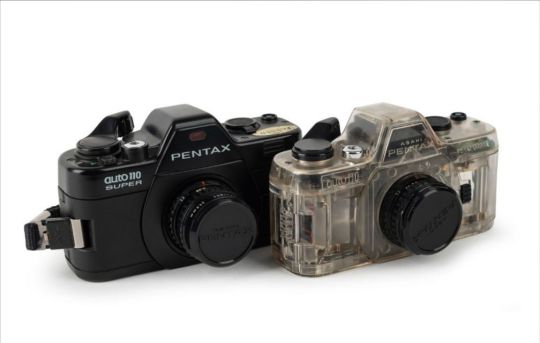
I really fancied one of these when they came out in 1979, because it could be bought as a full kit - three interchangeable lenses, various filters, flashgun, motor-drive, the lot.

And it was so small and handy...

...even with the flash and motor-drive in place

However my Dad, full of good sense as always, pointed out that I'd been shooting 35mm since getting my first good camera in 1971 (it was one of these)...
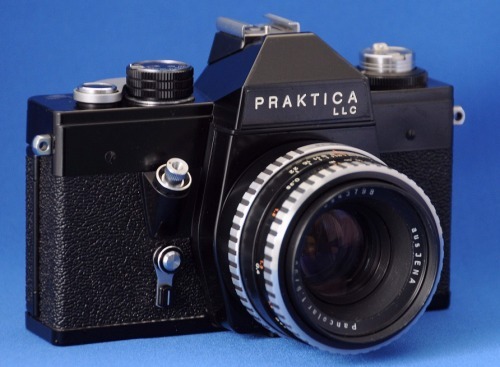
...and I'd invested quite a bit of my pocket-money in extra lenses, a flashgun, a carry-case and 35mm-dedicated darkroom stuff (enlarger, developing tank, contact printer etc.).
All of that would go to waste or at least be sold at a loss, because the formats were NOT interchangeable.

Dad wasn't a photographer, but he WAS an accountant... :->
He suggested that, instead of going for the Pentax 110, if I wanted a new camera I should pick a 35mm I really fancied, start saving and (as he and Mum had done with the Praktica), he'd go halves on the price as that coming year's (1980) birthday present.

I picked a Nikon FE, saved hard, made the necessary 50% and was able to order the camera well in advance of my birthday in October, which was just as well since the black finish I wanted...

...was out of stock and there was already high demand for it, so Dad and I placed an order at the start of August. He had a heart attack and died on the 23rd.
The package arrived in September, but I didn't open it until my birthday, because that seemed the right thing to do. The camera was Dad's last ever present to me and despite a theft and recovery too unrealistic even for fiction (@dduane was there and can back me up) I still have it.
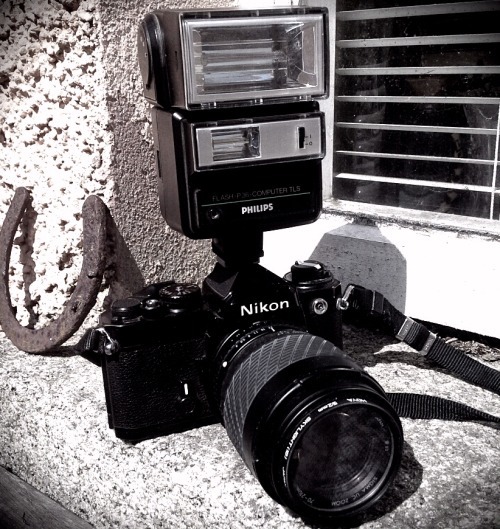
Though there still seem plenty of them about, I'm not sure I could say the same about a Pentax 110.
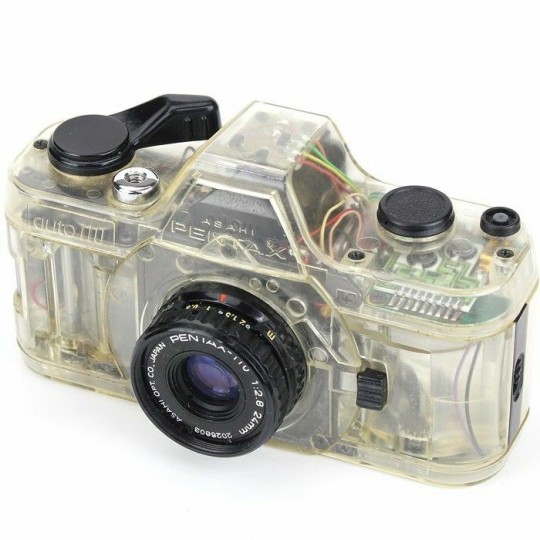
3K notes
·
View notes
Text
What types of batteries are there?
Primary Batteries: Single-use, cannot be reused.
Carbon-zinc batteries, alkaline batteries, paste-type zinc-manganese batteries, cardboard zinc-manganese batteries, alkaline zinc-manganese batteries, button batteries (button zinc-silver batteries, button lithium-manganese batteries, button zinc-manganese batteries), zinc-air batteries, primary lithium-manganese batteries, etc., mercury batteries.
There are two types of batteries based on the isolation layer: paste-type and plate-type batteries. Plate-type is further divided into C-type (ammonium type) and P-type (zinc type) cardboard batteries based on different electrolytes.
The traditional paste-type zinc-manganese dry cell battery uses low-activity natural manganese dioxide as the positive electrode material, with starch and flour as the paste isolation layer, and an electrolyte mainly composed of ammonium chloride (H4CL) and zinc chloride water solution. The negative electrode is a zinc can. Its discharge performance is generally poor, capacity is low, and the battery is prone to leakage towards the end of its use, but it is inexpensive.
C-type (ammonium type) cardboard batteries replace paste-paper with pulp paper. This increases the positive electrode filling amount by about 30%, and high-activity manganese replaces natural manganese by 30-70%, so the capacity is improved and the range of use is expanded. These are commonly used in small current discharge applications such as clocks, remote controllers, radios, flashlights, etc.
P-type (zinc type) cardboard batteries use zinc chloride-based electrolyte, and the positive electrode material is entirely high-activity manganese powder, such as electrolytic manganese or active manganese. Its leak-proof performance is much higher than paste-type and C-type batteries, and it is used in high current continuous discharge applications, such as in cameras, flashguns, recorders, shavers, electric toys, etc.
Cylindrical alkaline zinc-manganese batteries, also known as alkaline batteries, are the best-performing variety in the zinc-manganese battery series. They were developed in the mid-20th century as an improvement on zinc-manganese batteries. The battery uses potassium hydroxide (KOH) or sodium hydroxide (NaOH) water solution as the electrolyte, with a negative electrode structure opposite to that of zinc-manganese batteries. The negative electrode is a gel-like paste, with copper nails as the current collector. The positive electrode is on the outside, with active material and conductive material compressed into a ring and connected to the battery shell. The positive and negative electrodes are separated by a special separator.
The outer shell is usually made from 08F nickel-plated steel strip, which is cold-rolled and stamped, and also serves as the positive electrode current collector. The electrochemical manganese dioxide positive electrode material is pressed into a ring tightly against the inner wall of the cylinder to ensure good contact. The negative electrode uses powdered zinc particles made into a paste and is located in the middle of the battery. A negative electrode current collector (usually copper nails) is inserted, and the current collector is connected to the bottom of the negative electrode. In the battery, the positive electrodes are separated by a membrane (separation layer), and the outer part is sealed with a nylon or polypropylene sealing ring to achieve the battery’s sealing. The external appearance of the battery is almost the same as that of ordinary batteries.
Secondary Batteries: Rechargeable and reusable.
Secondary alkaline zinc-manganese batteries, nickel-cadmium (Ni-Cd) rechargeable batteries, nickel-metal hydride (Ni-MH) rechargeable batteries, lithium rechargeable batteries, lead-acid batteries, solar cells. Lead-acid storage batteries are divided into: open-type lead-acid storage batteries and fully sealed lead-acid storage batteries.
Nickel-cadmium battery (Ni-Cd), chemical batteries (secondary batteries).
Nickel-metal hydride (Ni-MH) battery.
Lithium-ion battery (Li-ion), lithium batteries.
Lead-acid battery, lead batteries.
Others.
Physical energy batteries.
Solar cell batteries.
Microbial batteries.
Polymer batteries.
Every type of battery is composed of four basic components: two different material electrodes, an electrolyte, a separator, and a casing.
Green and Environmentally Friendly Batteries
These refer to a class of high-performance, pollution-free batteries that have been developed and are now in use or under development, including the metal hydride nickel storage batteries, lithium-ion storage batteries that are currently in use, mercury-free alkaline zinc-manganese primary batteries that are being promoted, as well as fuel cells, solar cells (photovoltaic cells), etc.
Lead-Acid Storage Batteries
In 1859, French scientist Plante discovered the lead-acid battery, which consists of five basic parts: the positive plate, negative plate, electrolyte, separator, and container (battery cell). The battery uses lead dioxide as the positive electrode material, lead as the negative electrode material, sulfuric acid as the electrolyte, and microporous rubber, sintered polyvinyl chloride, fiberglass, polypropylene, etc., as the separator.
Cadmium-Nickel Batteries and Metal Hydride Batteries
Both use nickel oxide or nickel hydroxide as the positive electrode, potassium hydroxide or sodium hydroxide water solution as the electrolyte, and metallic cadmium or metallic hydride as the negative electrode. The metal hydride battery was invented in the late 1980s, utilizing the reversible electrochemical reaction of hydrogen-absorbing alloys to release hydrogen. It is a leading product for small secondary batteries.
Lithium-Ion Batteries
Lithium-ion batteries are a general term for batteries that use metallic lithium or lithium compounds as active materials. They are divided into primary lithium batteries and secondary lithium batteries.
The battery uses carbon materials, which allow lithium ions to be embedded and extracted, instead of pure lithium as the negative electrode, with lithium compounds as the positive electrode and a mixed electrolyte as the electrolyte solution.
The positive electrode materials of lithium-ion batteries usually consist of lithium active compounds, and the negative electrode is made of carbon with a special molecular structure. The most common positive electrode material is LiCoO2. During charging, the voltage applied across the battery terminals forces the positive electrode compound to release lithium ions, which then embed into the carbon with a layered molecular structure in the negative electrode. During discharge, lithium ions are extracted from the carbon layers and rebind with the positive electrode compound. The current is generated by the movement of lithium ions.
Although the chemical reaction principle is simple, in actual industrial production, many practical issues need to be considered: the positive electrode materials require additives to maintain activity during multiple charge-discharge cycles, and the negative electrode materials need to be designed at the molecular level to accommodate more lithium ions. The electrolyte, which fills the space between the positive and negative electrodes, must not only remain stable but also have good conductivity to reduce internal battery resistance.
Although lithium-ion batteries almost have no memory effect, their capacity still decreases after multiple charge-discharge cycles. This is mainly due to the changes in the positive and negative electrode materials themselves. On the molecular level, the hole structures that accommodate lithium ions in the positive and negative electrodes gradually collapse and clog. From a chemical perspective, the activity of the electrode materials becomes passivated, leading to side reactions that generate stable other compounds. Physically, the positive electrode material may gradually peel off. In summary, this reduces the number of lithium ions that can freely move during the charge-discharge process.
Overcharging and deep discharging will cause permanent damage to the positive and negative electrodes of lithium-ion batteries. On a molecular level, over-discharging will cause the negative electrode carbon to release too many lithium ions, causing the layered structure to collapse. Overcharging will force too many lithium ions into the negative electrode carbon structure, making some of them unable to be released. This is why lithium-ion batteries are usually equipped with charge-discharge control circuits.
Fuel Cells
Fuel cells are devices that directly convert the energy from a fuel (such as hydrogen or hydrogen-containing fuel) and an oxidant (such as pure oxygen or oxygen from air) into electricity. They have high efficiency, with electrochemical conversion efficiency reaching over 40%, and they do not emit pollutants.
0 notes
Text
How long does IPL for Rosacea last?
If you are considering IPL treatment for rosacea and are not sure how long it will take, learn everything you can about it.
Are you dealing with rosacea? The redness on your face and neck area must be a daunting feeling to you. Also, sometimes the burning and pain sensation hurts you most. This is a common inflammatory skin condition that affects mostly women over 30.

In several conditions, it affects the nose, eyes, chest, and all over the neck area. The best thing is that you can improve your skin condition with IPL treatment for rosacea. Let’s learn how long IPL skin treatment for rosacea lasts and how effective it could be.
What is IPL Treatment for Rosacea?
The intense pulsed light treatment is known as IPL. In this process, the professionals use controlled light at a specific wavelength to target the inflammation and redness. The light energy helps to heal the skin's texture and color.
The expert employs a flashgun to deliver a broad spectrum of light pulses. The light got absorbed by the specific strain in the skin. In this way, the light heats and destroys the structures that are reabsorbed by the body. It helps fix unwanted skin pigment conditions or skin changes.

Benefits of IPL for Rosacea Treatment
The intense pulsed light (IPL) is very useful for people dealing with skin conditions and helps to achieve a smooth skin tone. Have a look at the unique benefits of IPL for rosacea.
Reduces Redness
The IPL treatment for rosacea helps reduce the redness and inflammation on your face and affected area. It is effective at targeting and destroying blood vessels.
Improve Skin Tone
It is helpful to improve skin texture by destroying the blood vessels and brown spots. It has become the best option for getting toned skin.
Rejuvenates Skin
The light pulses breakdown the pigmentation and vascular cells in the skin and are helpful to rejuvenate the skin again.
Improve Collagen Production
The IPL skin treatment is also effective for collagen production around the eyes and helps to improve the skin elasticity. The light pulses target skin tissue and bring you better skin condition.
How Long Does the IPL for Rosacea Last?
You know that rosacea is a lifelong condition that can be controlled with the right treatment. The medicines and self-care methods help to prevent this condition from spreading more. The dermatologist always suggests the IPL for rosacea that could last for a few months to a year, as per your level of the rosacea. People see a significant improvement after a few series of treatments with IPL treatment.
That’s the reason this is very popular among those dealing with rosacea and other skin-related issues. To bring effective treatment results, you need to go through multiple sessions of IPL. The visible improvement may be seen after a few treatments.
You also need to go through with maintenance and follow-up maintenance sessions to maintain the results for a longer time.
Self-Care Practice after IPL for Rosacea Treatment To achieve better and lasting results for your IPL skin treatment, you should follow some self-care practices.
Gentle Cleaning
You should wash your face twice a day with a mildly sensitive skin cleanser. Must avoid harsh scrubs.
Apply Cool Compression
You should also apply cool compression to the treated area multiple times to heal the inflammation and redness.
Hydrating Moisturizers
To keep your skin hydrated, you should use a lightweight and non-comedogenic moisturizer. It helps you to prevent dryness.
And last, you should be in contact with your dermatologist to avoid any complications after the IPL for rosacea treatment.
Final Thoughts
So after learning the above points, you have better clarity about how effective IPL treatment is for rosacea. It lasts for almost a few months to a year, according to the condition of the skin. However, you can get better results with IPL skin treatment by doing self-care. Follow the dermatologist's guidance and cure your rosacea with IPL treatment.
0 notes